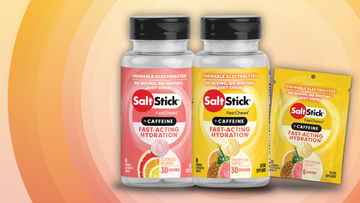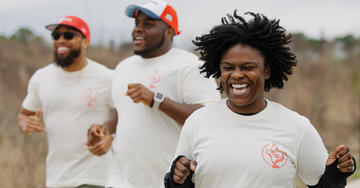
If you live in a place that experiences large temperature fluctuations throughout the year, you should be familiar with the impacts climate has on your physical performance. We have previously written about the physiological changes that accompany
hot and
cold environments, which include differences in blood vascularity, sweat rates, metabolism and mental stamina.
However, in addition to changes that occur on their own, you will have to intentionally alter your approach to exercise. Due to the strain that results from extreme temperatures, no amount of adaptation is going to allow you to work out with the same effort year-round. For example, in the summer, you will need to slow down and take extra steps to ensure hydration. Ignoring these needs places high amounts of stress on your body, which risks burnout or injury.
Be smart about temperature. In advance of the change of seasons later this month, we have listed five summer training mistakes to avoid.
Mistake #1: Not acknowledging the change:
The biggest mistake you can make is simply ignoring the climate altogether. Out of stubbornness, endurance athletes often begin every workout at the same pace (or with the same nutrition plan), regardless of temperature. But consistency is not a benefit in this case, as the body reacts differently to hot or cold environments.
The solution: Training and racing nutrition, as well as training routines, will need to be altered to help your body manage hotter temperatures without injury or overtraining. Be intentional about your workouts, and take climate into account. Your body with thank you with faster recovery times and lower stress levels overall.
Mistake #2: Not slowing down:
Each person’s reaction to the heat is slightly different, but
a 2007 study found that your heartrate increases in temperatures above 65 degrees – and even more so if the air is humid. This makes running significantly more difficult. For instance, in cooler temperatures, you may be able to run eight-minute miles at a heartrate of 135 beats per minute. But in hot temperatures, that number could easily climb to 155 beats per minute.
If you do not slow down to accommodate the additional stress, your body will be putting out significantly higher effort levels, which burns through fuel much faster. This is why
you cannot expect to run a marathon at the same speed in hot and cool temperatures.
The solution: RunnersConnect hosts an
online calculator that will tell you exactly how much to slow down, based on temperature and dew point. However, an easier approach is to simply train by feel. Instead of attempting to hit exact paces, simply aim for effort levels – easy, moderate, and hard. Your pace will adapt accordingly.
Mistake #3: Not accounting for additional fluid and electrolyte loss:
As an athlete your body becomes more efficient at producing sweat, meaning
you already sweat more than non-exercisers. In the heat, sweat rates go up even higher.
The combination of water and electrolytes in your sweat also changes, as sodium concentration is decreased. (If you have been an endurance athlete for many years, you may have noticed that your sweat tastes much saltier in a spring workout than in the fall.) Nevertheless, fluid and electrolyte losses increase in the summer, and you have to ensure their replacement to sustain performance.
Five electrolytes in particular play a pivotal role in maintaining normal human muscle function: sodium, potassium, magnesium, calcium, and chloride. A shortage of any of these electrolytes will affect athletic performance through a range a subtle to serious side effects. You can replace most of your lost electrolytes by eating a daily diet full of fruits, vegetables, grains and seeds, but for longer workouts, supplementation is often necessary.
The solution: Plan accordingly by bringing along extra water and electrolytes when you head out into the heat. Each person’s sweat rate is different, and it is a good idea to determine your own needs by using this test from
IRONMAN.
How to remove the guesswork with SaltStick: What is lost in sweat should be replaced by your electrolyte capsules in a quantity and form which your body can absorb. SaltStick Caps have been formulated to provide your body with a balanced electrolyte content in the suggested serving of 1 capsule per 30-60 minutes. Two SaltStick Caps in an hour equate to 430 mg sodium, 126 mg potassium, 22 mg magnesium, and 44 mg calcium per hour: The ideal ratio to keep you moving.
Mistake #4: Trying to play catch-up:
People enjoy working out in the summer because it is enjoyable to be outside. Your skin gets a tan and finishing a workout sweaty leaves a feeling of accomplishment. Equally, people often dread winter exercise, which is devoid of these benefits.
However, the winter is the prime time to build an endurance base by incorporating high amounts of easy activity and strength training. These efforts pay off in the summer when speed and tempo work is added to prepare for racing.
High-stress workouts are not effective – and will likely lead to injury – if an athlete does not complete the necessary amount of base training first. By attempting to “make up” for the months spent on the couch in the cold, endurance athletes can sometimes do too much too soon. This leads to injury or burnout.
The solution: Accept your fitness for where it is. If you skipped base training this winter, you have to live with the consequences. Remember, you will want to enjoy your workouts all summer long, and this will not be possible if you are sidelined with an injury two weeks into training.
Mistake #5: Not preparing for safety:
In our blog post “
This Is Why You Don’t Want to Suffer from Heatstroke,” we detailed the dangerous consequences of severe heat stress, including damage to the nervous system, liver, cardiovascular system and brain. Heat stroke can compromise training for several months as the body regains its ability to tolerate higher temperatures.
Exercising while unprepared is an avoidable and sometimes costly mistake. Overheating is hard to reverse without stopping activity completely and heading for a cool environment as quickly as possible. Not preparing adequately for heat stroke can leave you stranded, exhausted and with no ability to get help.
The solution: When exercising in hot temperatures, try the following options:
-
Phone a friend: Make sure someone knows to look for you if you do not return after a few hours in the sun. Even something as casual as “Look out for my post-run Snapchat” will at least alert your personal network to expect a check-in.
-
Train in the early morning or train indoors: Instead of pushing your body through the stress of the afternoon heat, it may be advantageous to avoid the heat altogether. If you struggle to get out of bed in the morning, try looking for a local running club. The camaraderie is often quite motivating.
-
Wear lighter clothing: If you must work out in the heat of the day, opt for lighter clothing, which helps repel sunlight and heat to keep you cooler for longer.
Conclusion:
As with any form of exercise, summer workouts provide many benefits – so long as you approach them in a healthy way. The most important step is to recognize that the heat will have an impact, and to set realistic expectations for what you can achieve.
Other than that, just be sure to grab plenty of water (and a SaltStick Capsule or two!), and you should be able to enjoy the sun problem-free.
Important Note: The above should not be construed as medical advice. Contact your physician before starting any exercise program or if you are taking any medication. Individuals with high blood pressure should also consult their physician prior to taking an electrolyte supplement. Overdose of electrolytes is possible, with symptoms such as vomiting and feeling ill, and care should be taken not to overdose on any electrolyte supplement.

 If you live in a place that experiences large temperature fluctuations throughout the year, you should be familiar with the impacts climate has on your physical performance. We have previously written about the physiological changes that accompany hot and cold environments, which include differences in blood vascularity, sweat rates, metabolism and mental stamina.
However, in addition to changes that occur on their own, you will have to intentionally alter your approach to exercise. Due to the strain that results from extreme temperatures, no amount of adaptation is going to allow you to work out with the same effort year-round. For example, in the summer, you will need to slow down and take extra steps to ensure hydration. Ignoring these needs places high amounts of stress on your body, which risks burnout or injury.
Be smart about temperature. In advance of the change of seasons later this month, we have listed five summer training mistakes to avoid.
If you live in a place that experiences large temperature fluctuations throughout the year, you should be familiar with the impacts climate has on your physical performance. We have previously written about the physiological changes that accompany hot and cold environments, which include differences in blood vascularity, sweat rates, metabolism and mental stamina.
However, in addition to changes that occur on their own, you will have to intentionally alter your approach to exercise. Due to the strain that results from extreme temperatures, no amount of adaptation is going to allow you to work out with the same effort year-round. For example, in the summer, you will need to slow down and take extra steps to ensure hydration. Ignoring these needs places high amounts of stress on your body, which risks burnout or injury.
Be smart about temperature. In advance of the change of seasons later this month, we have listed five summer training mistakes to avoid.







